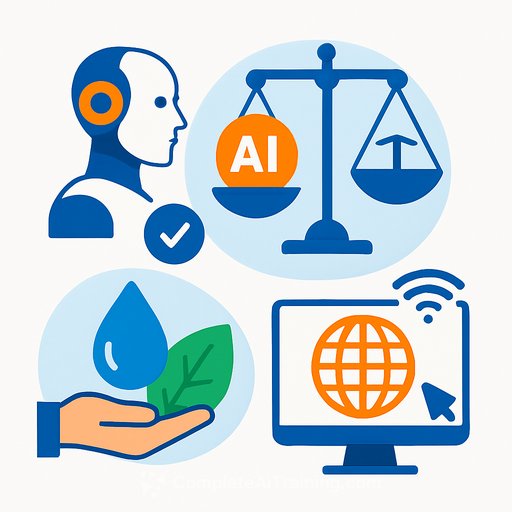AI Is Surging in Project Management - But Adoption Bottlenecks Need Care
AI is now a key driver in project management software decisions. Over half of UK buyers (59%) say AI pushed them to switch tools, ahead of integration improvements and fixing security gaps.
Expectations are rising too. Nearly half (49%) treat AI as essential in their research, and 68% say their expectations grew over the last year. The message is clear: leaders want automation and sharper analysis - and they want it now.
Where adoption stalls
Despite the appetite, the road isn't smooth. Almost half of buyers (48%) say adopting AI in PM software will be a major challenge next year - well above the global average. The friction points are predictable: skills, change fatigue, and data security.
Forty-one percent specifically call out internal skills gaps. AI features don't deliver if people don't know how to use them, trust them, or fit them into existing workflows.
Close the skills gap before you deploy
If you're investing in AI, invest in your people first. Upskilling must run in parallel with procurement - not after go-live.
- Run role-based training: Show each function how AI supports their exact tasks - status updates, risk flags, resource allocation, budget checks.
- Start with current workflows: Map what already works. Slot AI into clear points (e.g., intake, scheduling, reporting) instead of reinventing the process.
- Audit your data and integrations: Identify which systems feed the PM tool, who owns the data, and where quality or access will break the chain.
- Pilot, then scale: Pick one team or programme, measure outcomes, document what works, expand with confidence.
Emotional intelligence matters more, not less
As automation speeds up delivery, the human layer becomes the differentiator. Most PMs in the UK (59%) say they're using emotional intelligence more since adopting AI.
That tracks. AI can reduce admin, but it can't resolve misalignment, rebuild trust after a miss, or coach a stakeholder through change. Protect time for 1:1s, clarifying decisions, and cross-team alignment - that's where momentum is won or lost.
- Use AI to clear the noise: Automate updates and reporting so managers can double down on communication and decision-making.
- Codify escalation paths: Faster work means faster risks. Make it obvious who decides what, and how quickly.
Treat security as a product requirement
Security is top of mind for buyers - 72% rate it as critical, and for 51% it was the trigger for their most recent purchase. That's rational. AI features depend on more data and more integrations, and that increases exposure.
Breaches in the UK are on the rise, with high-profile incidents keeping boards on alert. Build your selection process around how vendors protect data, not just how they automate work.
- Interrogate data flows: What data is collected, where it's stored, how long it's kept, and who has access.
- Assess API behaviour: What is sent to third parties? Are prompts and outputs retained? Can you opt out?
- Check governance and certifications: Look for documented policies, audits, and incident response maturity.
- Review breach history and SLAs: How have they handled past incidents? What's guaranteed in writing?
For context and guidance, see official advice from the National Cyber Security Centre.
A practical playbook for managers
- Define outcomes first: Pick 3-5 measurable goals (cycle time, forecast accuracy, on-time delivery, reporting time saved, resource utilisation).
- Prioritise use cases: Start with high-volume, low-judgement tasks: resource suggestions, risk summaries, automated status notes, RAID logs, timesheet nudges.
- Set policy guardrails: What data is allowed in prompts? Who approves new integrations? How are AI outputs reviewed?
- Create a RACI for AI: Assign owners for data quality, model settings, prompts/templates, and compliance.
- Measure trust, not just speed: Track adoption, satisfaction, and rework rate from AI-generated outputs.
- Budget for enablement: Allocate time for training, office hours, and prompt libraries - the "hidden" work that makes AI useful.
Bottom line
AI can improve throughput and clarity in project management, but only if you treat adoption as its own project. Upskill your teams, strengthen your human layer, and put security on the critical path. Do that, and you'll see real operational gains - not just new features.
If you're building an upskilling plan for PMs, explore focused learning paths here: AI courses by job role.
Your membership also unlocks:






